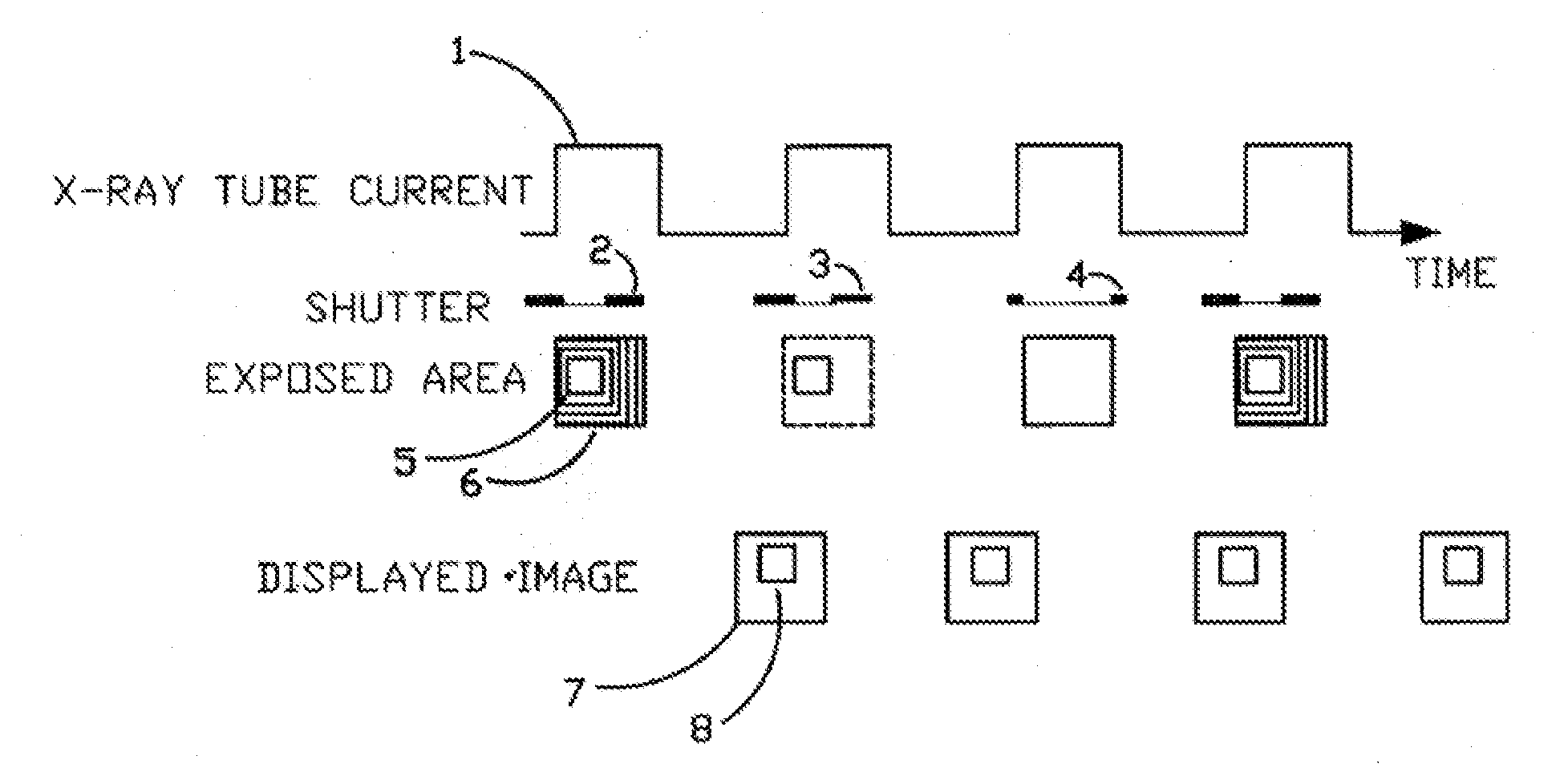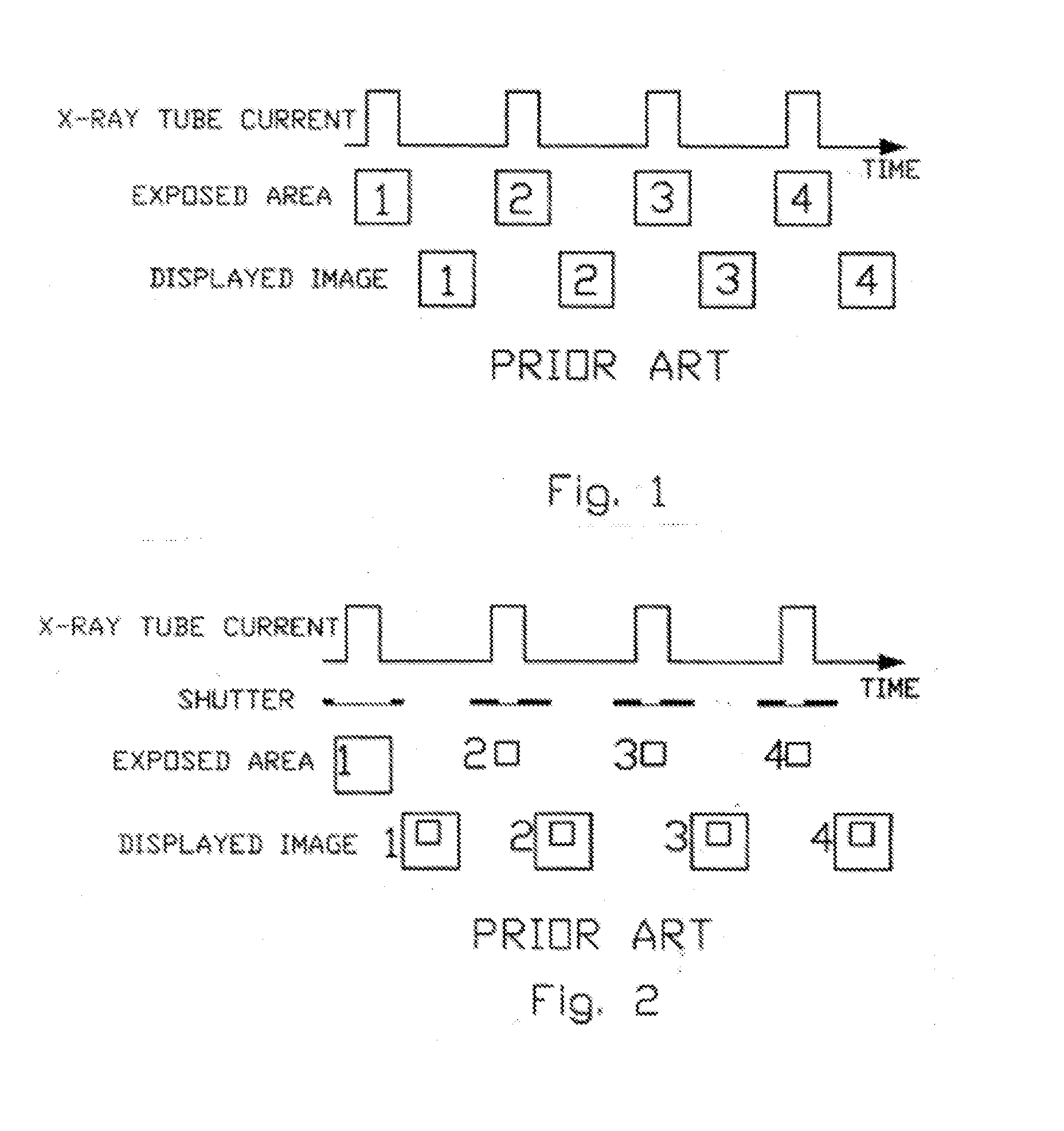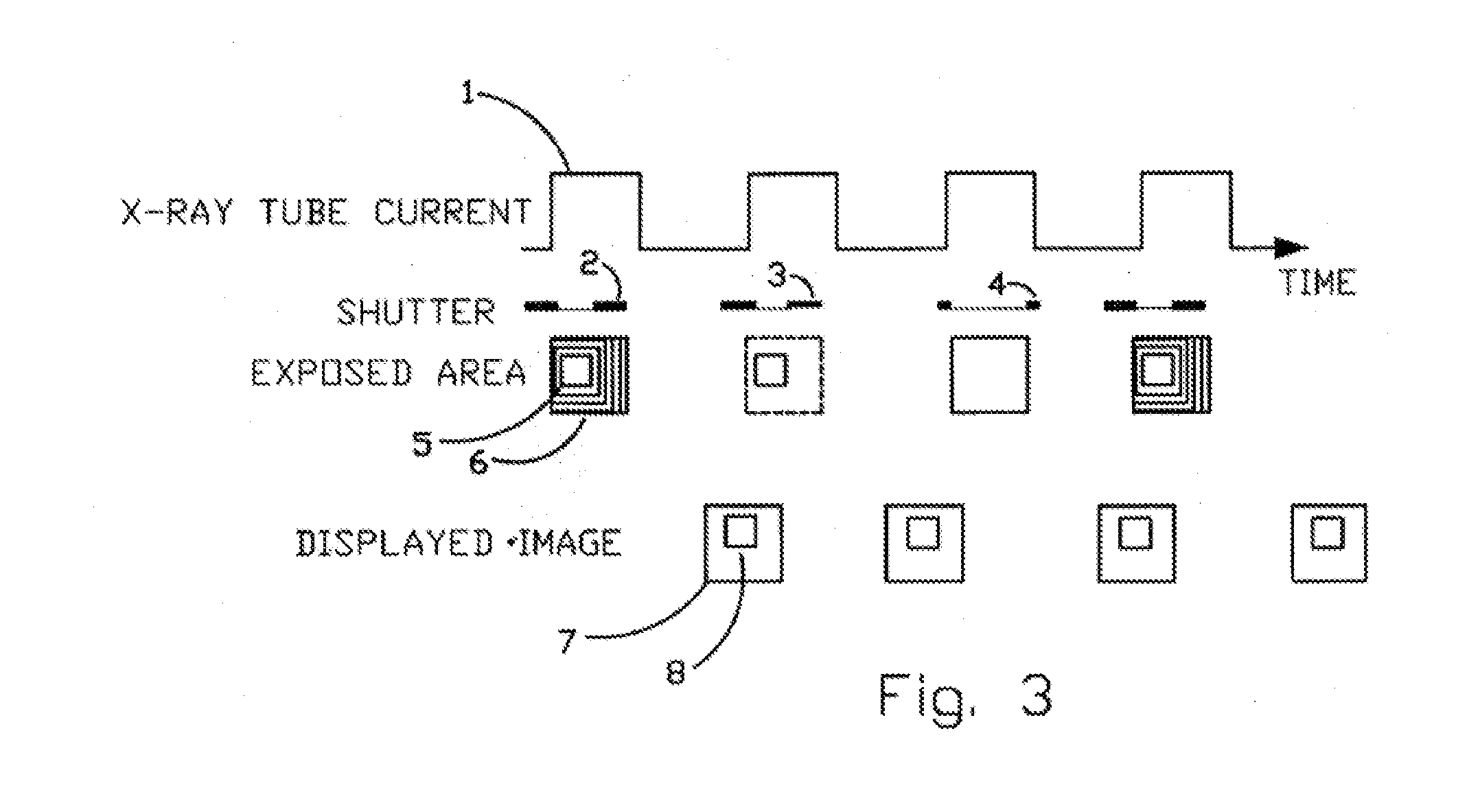X-Ray Dose Reduction by Controlled Shutter Speed
- Summary
- Abstract
- Description
- Claims
- Application Information
AI Technical Summary
Benefits of technology
Problems solved by technology
Method used
Image
Examples
Embodiment Construction
[0016]This application is an improvement on U.S. Pat. No. 7,983,391 which is hereby incorporated by reference in its entirety. The improvement allows a use of a shutter controlled ROI to be applied to procedure having fast moving body organs outside the ROI, such as the beating heart during cardiac interventions or when a varying x-ray exposure profile is required. The area outside the ROI is imaged at a lower exposure dose, achieved by using shorter exposure time. Exposure outside the ROI could be different at every location depending on the blade retraction profile. Reducing the dose will reduce the image quality, but the area outside the ROI is of lesser importance to the physician performing the procedure. It was found that even a 10× reduction in the X-Ray dose outside the ROI produces acceptable image. The part of the image inside the ROI actually improved when the ROI is reduced because of reduced X-Ray scattering. We performed an initial experiment to validate this assumptio...
PUM
 Login to View More
Login to View More Abstract
Description
Claims
Application Information
 Login to View More
Login to View More - R&D
- Intellectual Property
- Life Sciences
- Materials
- Tech Scout
- Unparalleled Data Quality
- Higher Quality Content
- 60% Fewer Hallucinations
Browse by: Latest US Patents, China's latest patents, Technical Efficacy Thesaurus, Application Domain, Technology Topic, Popular Technical Reports.
© 2025 PatSnap. All rights reserved.Legal|Privacy policy|Modern Slavery Act Transparency Statement|Sitemap|About US| Contact US: help@patsnap.com



